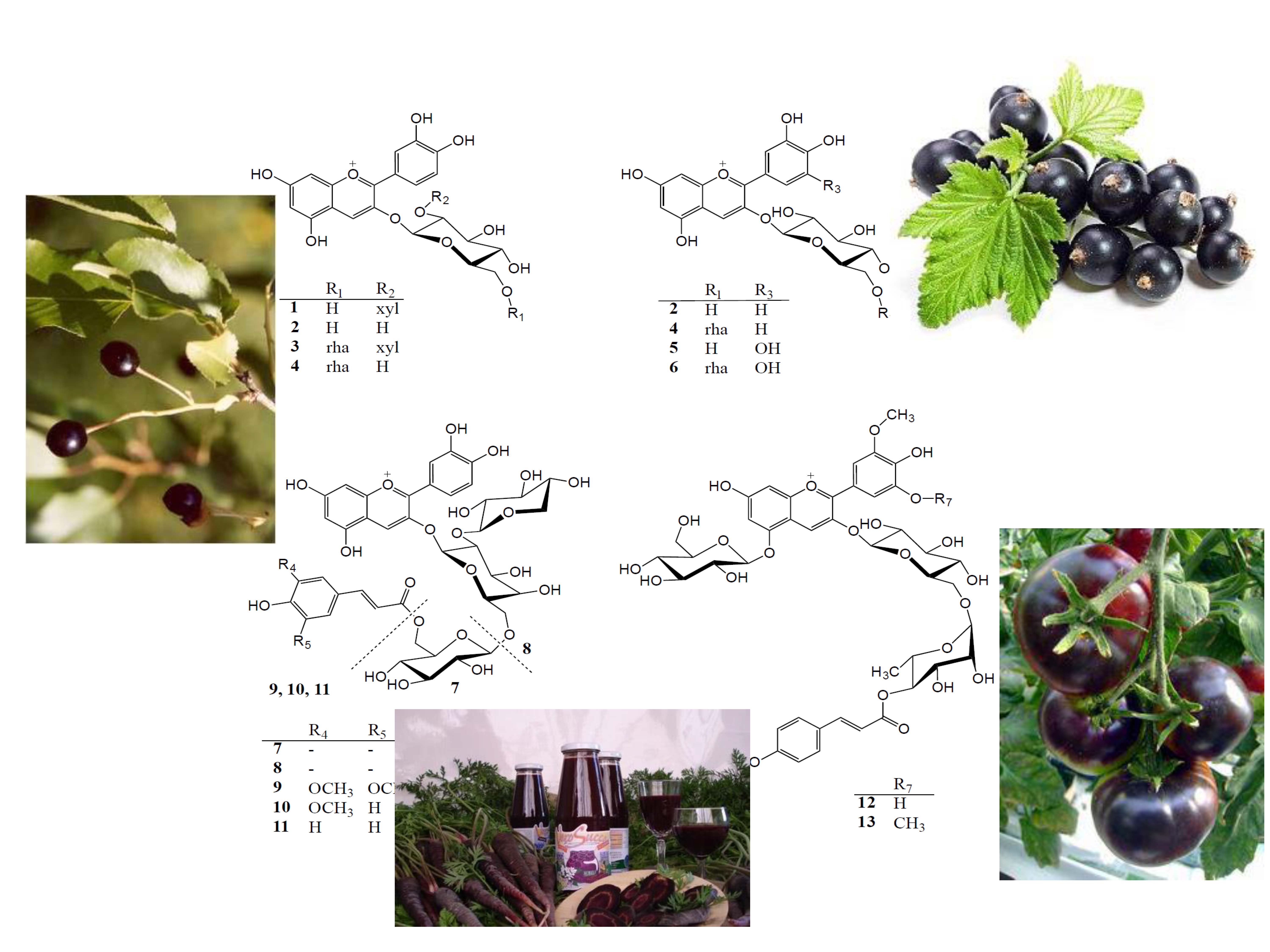Anthocyanins, the naturally occurring pigments responsible for most red to blue colours of flowers, fruits and vegetables, have also attracted interests because of their potential health effects. With the aim of contributing to major insights into their structure-activity relationship (SAR), we have evaluated the radical scavenging and biological activities of selected purified anthocyanin samples (PASs) from various anthocyanin-rich plant materials: two fruits (mahaleb cherry and blackcurrant) and two vegetables (black carrot and ‘Sun Black’ tomato). PASs from the above-mentioned plant material have been evaluated for their antioxidant capacity, using TEAC and ORAC assays. In human endothelial cells, we analysed the biological activity of different PASs by measuring their effects on the expression of endothelial inflammatory markers, including endothelial adhesion molecules VCAM-1 and ICAM-1. We demonstrated that all the different PASs showed biological activity. They exhibited antioxidant capacity of different magnitude, higher for samples containing non-acylated anthocyanins (typical for fruits) compared to samples containing more complex anthocyanins acylated with cinnamic acid derivatives (typical for vegetables), even though this order was slightly reversed when ORAC assay values were expressed on molar basis. Concordantly, PASs containing non-acylated anthocyanins reduced the expression of endothelial inflammatory antigens more than samples with aromatic acylated anthocyanins, suggesting the potential beneficial effect of structurally diverse anthocyanins in cardiovascular protection.

